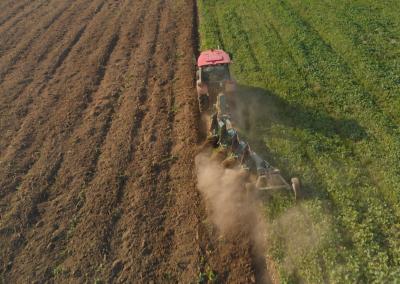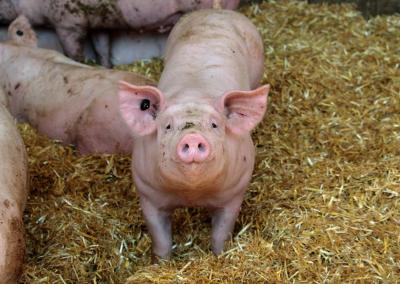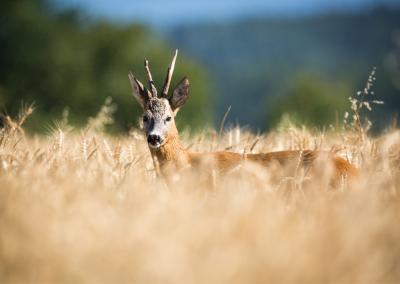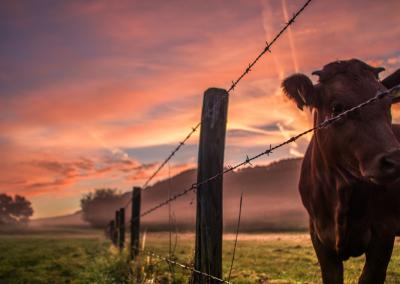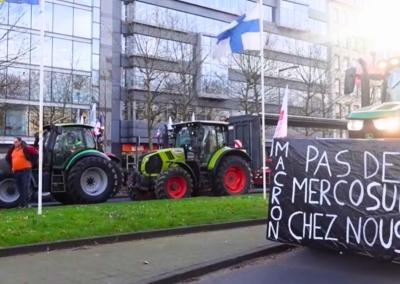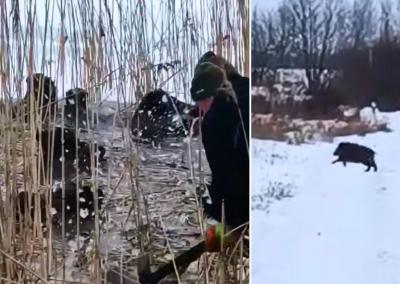Weed trees that are better off on the plot
Why are such trees like weeds? Have you heard the saying "Let the goat in the garden"? If that happens, weed trees will spread widely throughout the area, crowding out useful garden trees, damaging the soil structure and acidity, the long roots interfering with other plants, and the pollen and fluff causing allergic reactions in the inhabitants.
If your plot is not yet planted and you are still planning your dream garden, find out in advance which trees will create a problem rather than a beauty. As long as these trees are young and small, the owner will enjoy the natural look of the garden and a pleasant landscape. However, when they grow to the true size of the species, it is likely that they will change their minds and regret their choice.
Some of the trees that are not recommended are: Carpenter birch, white poplar, white-flowered robinia (acacia), osier willow, sour sumac, American maple. Let's talk about their damage in more detail. By the way, some of these are invasive.
Birch bark beetle
You don't even need to plant it on your property – if your property is next to a forest, sooner or later the birch will grow on its own. The question is whether you should leave it to decorate your own landscape or get rid of it as soon as possible.
It is important to understand: a crotch birch is bound to cause trouble for the plot owner. Not only does it actively pollute the plot with its constantly flying seeds and crumbling “piercing”-scissors, broken twigs, and in autumn it leaves a lot of leaves – its seeds are quickly scattered all over the area, germinating in the most unexpected places, even on the roof. From time to time you will have to get rid of young birch trees in beds and flowerbeds.
Birch also needs plenty of moisture. And if it benefits from absorbing excess water in a boggy area, light sandy soils will be unsuitable for gardening and horticulture. And it's not just a question of moisture - the birch's aggressive surface root system won't stand a chance against other cultivated plants.
Birch willow
An elm tree looks great next to a pond or small lake, lowering its drooping branches above the surface of the water. Like most willow species, they are ideal for planting in waterlogged soils and where the water table is high. However, it is worth being aware that the volumetric root system of the willow spreads far beyond the projection of the crown and often reaches water supply systems and other underground communications. Strong willow roots can damage pipes and cause many problems.
Mature willow trees can reach an impressive size out of proportion to the size of the plot. It is an expansive tree with a high growth rate and space requirements. Instead of a large species, it is better to plant a miniature willow on your plot.
White Poplar
This is another invasive flora that has started to behave unpredictably in our latitudes, turning into a weed. White poplars can reach impressive sizes (30-40 m high, up to 2 m trunk diameter). During flowering, they release a lot of white fluff, which pollutes areas and causes allergies for some. The poplar fluff itself is not an allergen. However, as it moves through the air, it absorbs and carries pollen from other plants, thereby greatly increasing the allergenic background.
On the other hand, poplars are valuable from an environmental point of view because they actively clean the air of harmful impurities, releasing three times more oxygen than, for example, linden trees.
The white poplar is a tall tree with a high annual growth rate and fragile wood. If planted on or near a site, it will pollute the area with down and branch debris and pose a threat to buildings.
American maple (American maple)
This invasive tree, originally from North America, was introduced in the 18th century as a fast-growing ornamental plant for street landscaping, parks and botanical gardens. The tree proved tenacious, vigorous and prolific, quickly spreading beyond the parks and „invading“ new territories, displacing native flora.
American maples often grow crookedly, at an angle of 30-50º and all other vegetation that gets in the way of the crown projection is doomed to die, because the tree secretes inhibitory substances that inhibit the growth of its neighbouring plants.
American maple pollen is a strong allergen and is released in large quantities during the flowering period, causing discomfort to residents. According to some studies, the foliage of the maple tree does not clean the air of exhaust gases, but rather oxidises them to more harmful compounds. The American maple has been nicknamed the "killer maple" by ecologists and botanists for this aggressive behaviour.
Sourwood
Thanks to its cold hardiness, its non-sticky nature, its rapid growth and reproduction, sumac has not only become widespread, but has also become a headache for gardeners on many plots. The problem is that the horsetail is over-rooting not only within the frontal circle, but also at a considerable distance beyond it. Attempts to remove the main root system of the sumac provoke even more prolific growth of new root suckers.
If you already have Sour Sumac on the site, be sure to dig artificial root barriers around the perimeter of the trunk at least 50 cm deep. Alternatively, consider alternatives to sumac – other "non-malignant" trees with the same beautiful feathery leaves and bright red berries, such as ornamental dogwoods.
Robinia (Acacia) white-flowered
This is also a thriving invasive tree, very vigorous and therefore fast spreading. For a long time, Robinia was called Acacia, which is a misnomer. Its main damage to gardens and forests – changing the composition of the soil for the worse, as this tree releases a lot of nitrogen into the soil. The excess nitrogen creates intolerable conditions for normal native vegetation, which is simply forced to disappear from the lands that are being 'invaded' by the robinia.
The nitrogen released is very damaging to light sandy soils and sandy loams, which are unsuitable for growing conventional crops. Remember that there are three-digit fines (€200-400) for growing invasive species. The Department of Environmental Protection has given the green light for the eradication of the invasive white-flowered robinia.


